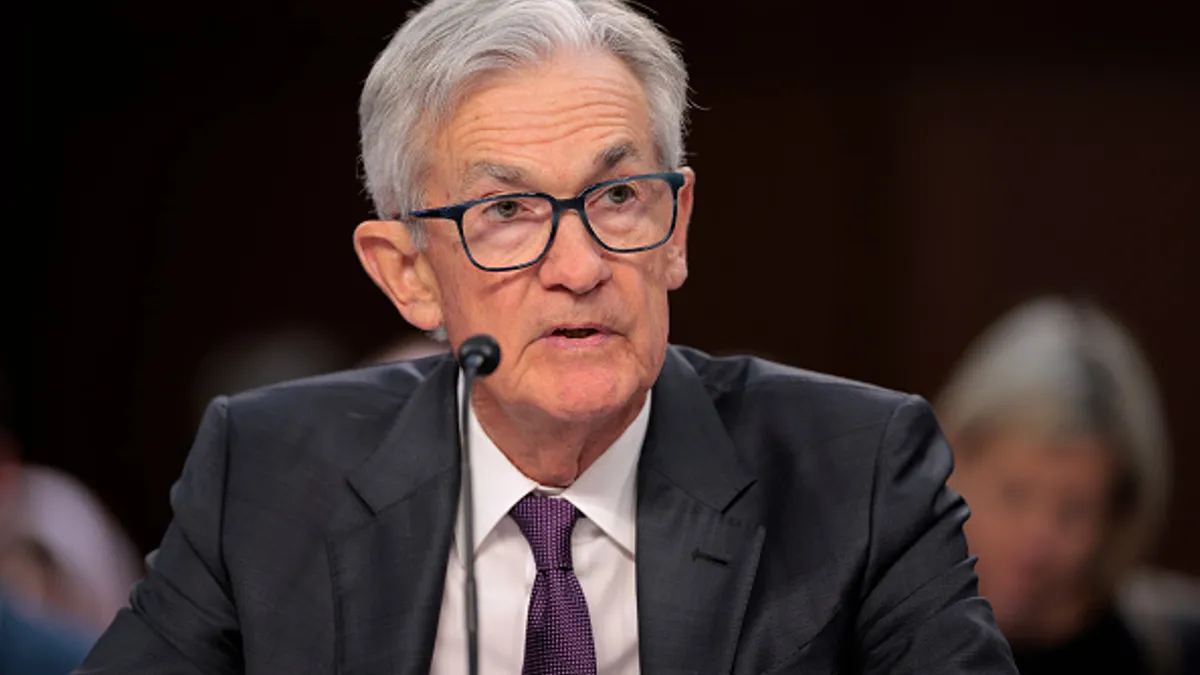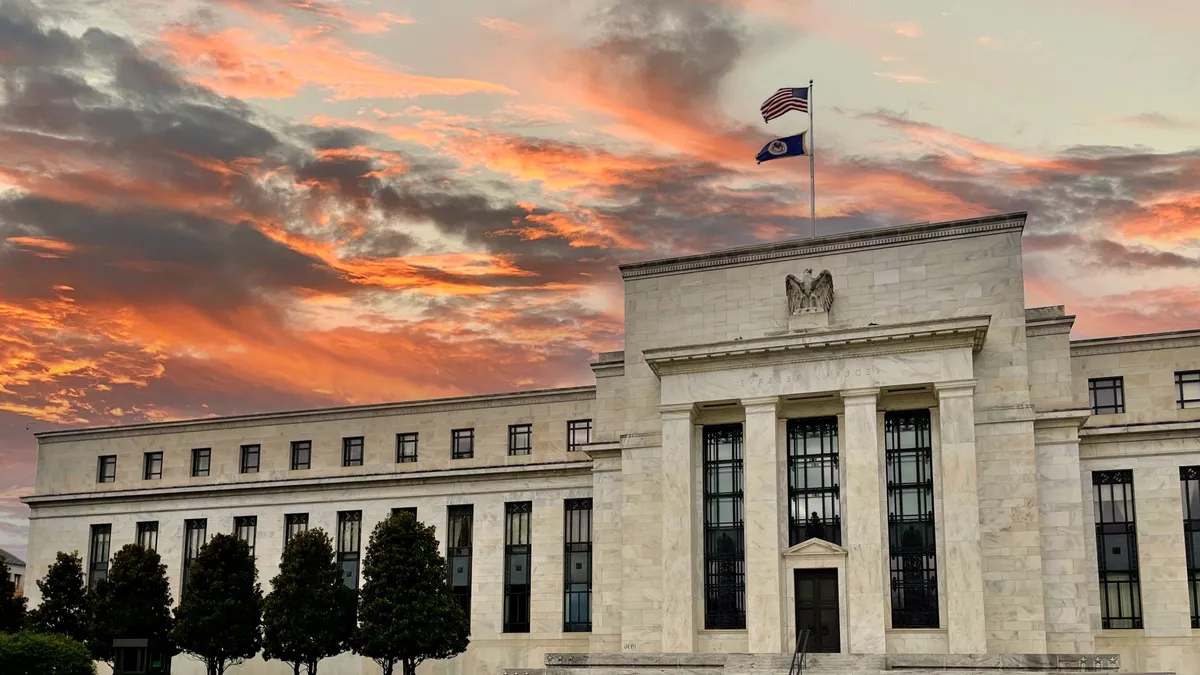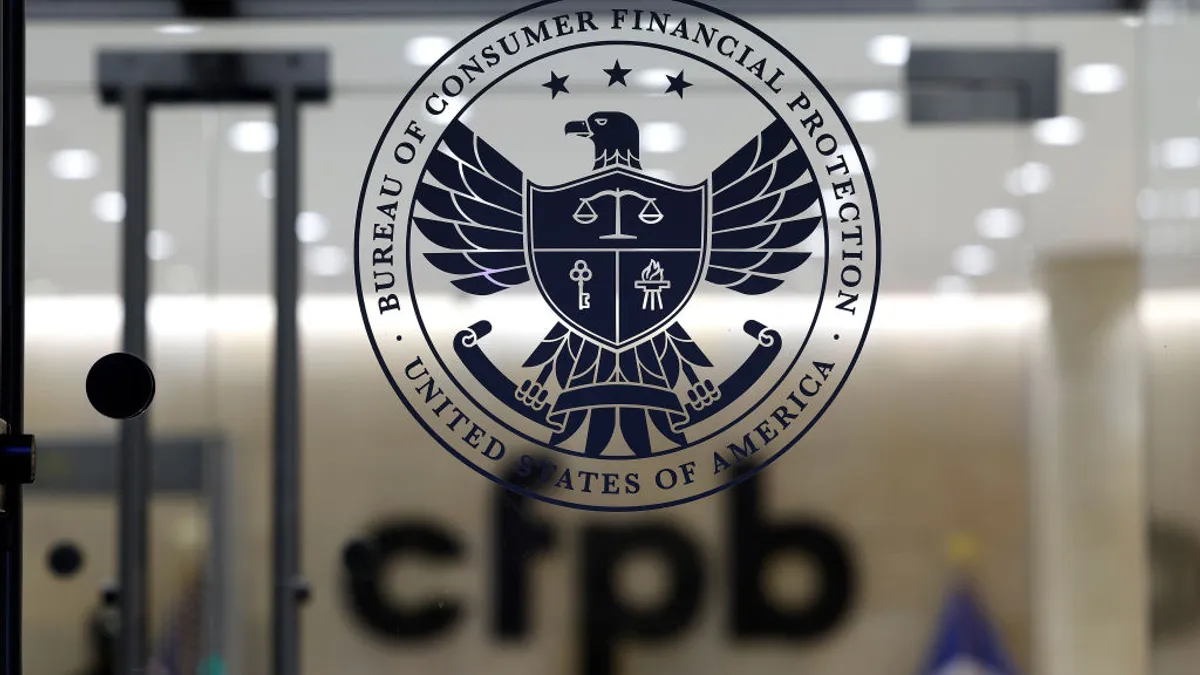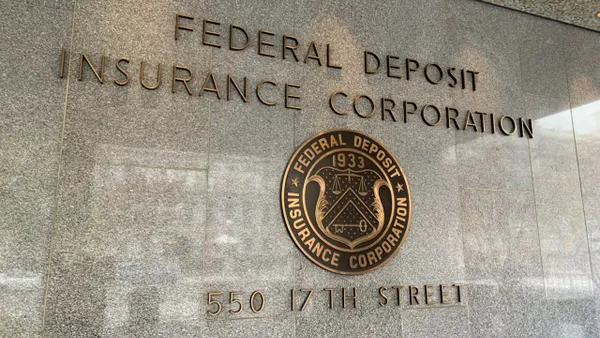As regulatory approval timelines for bank mergers and acquisitions stretch out, bankers are eager to smooth the way for a potential deal.
That’s led more banks to pledge they’ll raise capital to boost a deal’s chances of approval, or explore charter changes to find a more amenable regulator. Investment bankers and attorneys say banks are making these moves more often with the goal of obtaining necessary regulatory approvals.
After hitting a five-year low in 2023, bank M&A activity has shown signs of life this year: UMB Financial announced a $2 billion deal to buy Heartland Financial. SouthState aims to purchase Independent Bank, in the year’s second $2 billion transaction. And Wintrust plans to acquire Macatawa Bank for $510.3 million.
Frank Sorrentino, a managing director in the investment-banking division at Stephens, said he’s seeing a lot of banks with $5 billion in assets or less that are “waving the white flag” and ready to sell, as a higher-for-longer interest rate environment and mounting technology and regulatory compliance costs stress smaller banks.
But in the wake of last year’s regional bank failures, regulators remain concerned about banks’ capital levels, their exposure to troubled sectors such as commercial real estate and higher interest rates’ effect on securities portfolios.
Mergers are facing more intense scrutiny from the Federal Deposit Insurance Corp. and the Office of the Comptroller of the Currency, leading approval timelines to increasingly draw out, which is daunting to would-be dealmakers, noted Reb Wheeler, a New York City-based partner specializing in financial services M&A at law firm Mayer Brown.
To that end, anything buyers can show or do to put regulators at ease will likely benefit a potential transaction, attorneys and investment bankers said.
“There was already a high bar; now there’s a higher bar,” said Max Bonici, counsel focused on bank regulation at law firm Venable.
Here are four things investment bankers, attorneys and consultants said they’re seeing banks pursue to nudge potential deals along to get regulators’ stamp of approval.
1. Capital raises
Raising capital alongside a deal has popped up in some recent acquisitions, including the Provident-Lakeland merger, UMB’s acquisition of Heartland Financial, and Fulton Bank’s purchase of failed Republic First.
FirstSun’s January announcement of its aim to acquire HomeStreet noted a $175 million equity raise “to support the merger.” That has since increased to as much as $235 million. In the Provident-Lakeland merger, regulatory approvals were given on the condition that Provident complete a $200 million capital raise ahead of the transaction’s closing.
That pattern is expected to continue. Attorneys and investment bankers said they’re seeing an uptick in merger conditions involving capital, including post-transaction raises.
“Most of the larger deals that have been done in the last 12 months, they’ve had some kind of capital component to it,” Sorrentino said.
Sorrentino said his firm has spent a lot of time talking with companies about the need to bring capital to the equation, and how they might structure that.
Capital concerns are heightened for regulators since last spring’s bank failures. Regulators are more likely to probe an acquirer’s plans to raise added funds if a post-transaction capital ratio will be lower than optimal, and they’ve shown more concern that the surviving entity, in a larger merger, is going to be well-capitalized.
Before sitting down with regulators, would-be acquirers need to ensure that they’ve “answered the capital question,” said Jacob Thompson, Dallas-based managing director of investment banking at Samco Capital.
“The last thing you want to do is spend time and money and resources trying to put a transaction together, only to find out that there's not enough capital there,” Thompson said. “The regulators aren't going to approve it.”
With bank stock valuations near historic lows, raising capital can mean dilution for existing shareholders.
“If it’s needed in order to do a transaction, it generally comes from a place of the current shareholders understanding the value creation of a deal, despite that potentially dilutive effect of raising capital,” said Robert Kuykendall, a senior vice president at boutique investment banking firm MJC Partners.
2. Capital requirements
Requirements to maintain certain capital levels have also popped up in merger agreements — including increased back-and-forth with regulators during the application process.
“As a general matter, we're seeing more of this type of use of conditions in our deals,” Joe Silvia, a Chicago-based partner with law firm Dickinson Wright, said of both capital raises and threshold requirements.
The Provident-Lakeland deal, for one, included adherence to certain capital thresholds for a three-year period post-merger: The bank needs to maintain a Tier 1 capital to total assets leverage ratio of 8.5% and a total capital to risk-based assets ratio of 11.25%.
“I've never actually seen that in a public document,” Sorrentino said. “You tend to see that a lot behind the scenes, in terms of a nonpublic capital plan.”
Being able to show capital adequacy for a period of time after a merger is not uncommon, Thompson noted. Still, “I don't remember seeing capital requirements discussed maybe as openly, as far as the deal approval and amending merger agreements,” he said.
That development can provide a kind of playbook for how bankers might pursue a similar deal and the kind of capital ratios they might need to ultimately hold, Sorrentino said.
In many cases, attorneys and investment bankers are making sure clients understand that regulators are generally looking to see higher capital ratios than they may have in the past, especially given concerns around CRE concentration.
“We're modeling out a lot of these transactions with higher pro forma ratios than we have in the past,” Kuykendall said.
For pro forma leverage ratios, that’s edged closer to 10%, where there was a level of comfort with closer to 8% in the past, he added.
Sorrentino said he expects to see more of that, “where banks are going to have to fulfill certain thresholds, and they’re going to have to commit to meeting certain capital ratios at closing, or thereafter.”
“It's a pretty hot topic, because if you're thinking about M&A, you’ve really got to understand, what are we signing up for?” he added.
3. Charter changes
Some acquiring lenders — FirstSun, for example — are pursuing or exploring charter changes, sometimes to find a more receptive regulator.
FirstSun said in April it planned to switch from a national charter, overseen by the OCC, to a Texas state charter — making the Federal Reserve its primary federal regulator. FirstSun's subsidiary bank, Sunflower Bank, is Dallas-based.
When New York Community Bank bought Flagstar, it switched from a state to a national charter, putting it under the purview of the OCC and making it so that the deal did not need FDIC approval.
“If you’re merging with another significant entity, it’s a perfect opportunity to re-evaluate and see where the best fit is,” said Denise Maple, a clinical assistant professor of finance at the University of Illinois.
FirstSun made the move partly due to concerns the OCC would delay approval of its purchase of HomeStreet, “given their recent experience with multifamily and CRE positions," FirstSun CEO Neal Arnold said in May.
CRE exposure tends to be viewed differently by state or federal regulators, and the OCC has historically taken a harsher view of concentration in the segment, Silvia said.
“If somebody decides to flip regulators, they probably have more comfort that whichever regulator that they’re going to has got a more open mind about the combined company’s business model,” Sorrentino said.
Sorrentino said he expects more banks will explore charter changes, even preemptively, with the belief that they’ll have a better pathway if they decide to pursue a merger or acquisition.
Thompson, by contrast, said he isn’t seeing much of that among his mostly privately held community banks based in Texas.
But, he said, “I can understand why a bank may want to switch charters, because they feel like maybe a state-level banking regulator would have a better or maybe a more thorough understanding of their business.”
The move could be viewed negatively, though.
It’s “sort of like trying to fit a square peg into a round hole, just to get a deal done,” Kuykendall said. “The regulators may be wising up to this, because it feels sort of forced.”
4. Informing regulators earlier
Banks, too, are socializing regulators significantly” more often, on the possibility of a deal of this, Kuykendall said.
“You never want to surprise the regulators,” Thompson said. “The more transparent that buyers or potential buyers can be up front kind of helps.”
Pre-application filing calls, involving regulatory agencies and the acquirer, are calls Silvia said he doesn’t recall having much of in the past but have become far more common.
“It feels like a soft application stage,” he said. Regulators are “questioning certain elements of the transaction, pre- and post-, and they're kind of giving you a roadmap as to where some of their thinking may be, with respect to the red flags of the application.”
Bank regulatory agencies aren’t going to give an indication of approval or denial during an initial conversation. But they’re likely to give enough meaningful feedback to give banks an idea of whether they should move forward with or re-evaluate a possible deal, Thompson said.
Additionally, advisers are telling banks to lay out how the transaction would look on a pro forma basis and provide more documentation and detail during the application process than they have in the past.
“I try and front-run some of the issues with clients and say, ‘Look … they're going to ask about capital, post-transaction. So, do we have a capital policy or a capital plan in place that's been approved by the board? Is it reviewed annually? Let's think about providing that,’” Silvia said.
Ultimately, good relationships with regulators are crucial when banks have a deal in mind.
“Our own preliminary due diligence involves asking, ‘How is your relationship with your regulator, and how can you make it better? Because we're going to need to have a very tough conversation with them to get this deal done,’” Kuykendall said.



















